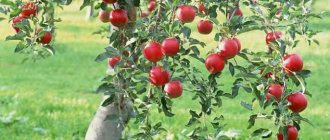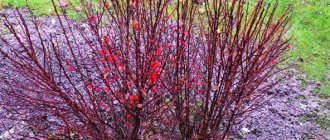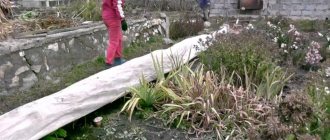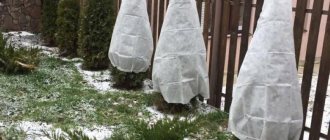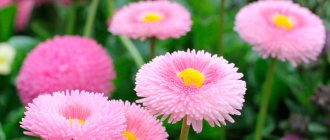Winter is just around the corner. Therefore, it’s time to think about how to cover the plants to protect them from frost. Today there are many different covering materials. And each has its own pros and cons.
It is difficult to say which material is the most effective for covering plants for the winter. His choice depends on the climate of the area, the type of plants and the capabilities of the gardener. We will talk about the advantages and disadvantages of popular covering materials. And which one will be the most suitable is up to you to decide.
But keep in mind that the correct use of a certain material for covering plants is of great importance. In order not to destroy your green pets, before sending them for the winter, read our article Sheltering plants for the winter - debunking myths.
Snow
Under thick snow cover, plants can survive even severe frosts. Perhaps this is the most convenient covering material to use, but in many regions it is unreliable: snow falls much later than the onset of frost and melts in the midst of winter.
In addition, in open areas snow is blown away by gusty winds, so additional snow guards must be installed. You will have no less trouble if the snow cover turns into a crust of ice. Under it, plants cannot “breathe” and die out.
Thus, snow as a covering material for plants is suitable only for regions where the winter is consistently snowy and without thaws.
Lapnik
Coniferous branches are a readily available material in forested regions. The spruce branches do not get wet, create an additional layer of air and retain snow well, which, as we found out, also perfectly protects plants from frost. In addition, the thorny needles repel rodents, so spruce branches are especially valuable when covering young seedlings. They can be used to tie trunks. In early spring, spruce branches also protect plants from sunburn.
However, this covering material also has disadvantages. The needles that fall from the branches acidify the soil, so you should not cover plants that prefer alkaline soil with spruce branches.
Coniferous trees and shrubs often get sick. Branches with plaque and growths can infect healthy plants, so spruce branches should be carefully inspected before covering flowers, vegetables or trees with them. In addition, you can be fined for harvesting spruce branches.
Ways to prepare perennials for winter
You can ensure the safety of perennial flowers by:
- crown trimmings;
- mulching the soil under the crop;
- insulation of the living above-ground part remaining above the ground.
These activities are most often carried out in a comprehensive manner, and non-frost-resistant species and most of the bulbous plants, except those that bloom in early spring, are dug up and stored until spring in warm or cool, dry rooms.
Frost-resistant, herbaceous species simply need to be trimmed and the soil in the flower bed sprinkled with suitable mulch. All nutrients, as well as future growth points for such crops, are underground, so after mulching and snow cover, nothing threatens the flowers.
Leaves
Dry leaves protect plants well from the cold, but it is quite problematic to find suitable material. The leaves must come from healthy trees (without spots or plaque), and in the fall there are not so many such specimens. In addition, they should be free of pests.
If autumn turns out to be rainy, finding dry leaves will not be easy. Even if sunny weather dries them out, this material must be stored in a ventilated area with a roof.
The leaves have another significant disadvantage: during rains and thaws, due to water, they stick together and do not allow air to pass through. Therefore, the leaves need to be additionally covered with plastic wrap.
Features of pre-winter pruning of perennials
Since the above-ground part of plants is involved in the accumulation of nutrients for the winter during the warm season, it is best to prune it when the first autumn frosts arrive. This period in most regions begins in September and ends closer to the second half of October.
What are the benefits of pruning perennials? Removing dead parts:
- eliminates the persistence of pest larvae in dry stems;
- reduces the risk of spread of putrefactive and fungal diseases, including rotting of the root system;
- makes it easier to cover and mulch flowers for the winter.
The pruning height depends on the size and structural features of the ornamental plants.
Low-growing small plants are cut at ground level; for larger specimens with powerful, often semi-lignified shoots, the lower part of the stems is left. Using them in the spring it will be possible to accurately determine the location of the plant, and in winter they will additionally retain snow and serve as natural protection.
The most frost-resistant, perennial flowers, for example, cornflower, aquilegia, rudbeckia, astilbe and other species, are pruned, leaving no more than 5 cm of the height of the stems above the ground.
Delphiniums and similar tall plants with powerful hollow stems are pruned, leaving at least 25 cm. Otherwise, water entering the stem easily causes rotting of the upper part of the rhizome and death of the flower. In order for plants such as irises to survive the winter, their full leaves are cut to a height of 10 centimeters a couple of weeks before the onset of cold weather. Curly annual shoots of clematis and other similar crops are shortened so that in the shelter during the winter their green parts do not freeze and rot.
Straw
Straw is good for covering beds with winter crops and plantings, and it can also be used to protect perennials from frost. But during rains, the straw needs to be protected with polyethylene.
This covering material also retains snow well. However, straw has a significant drawback: mice love to nest in it, which can cause significant damage to the garden. In addition, in warm winters, plants under the straw will rot and become moldy.
To prevent the straw from getting wet, you can use straw mats to cover the plants. Water rolls off them and does not penetrate inside.
But keep in mind: the ground under the straw takes a long time to thaw in the spring, so such shelter is removed early. Then plants that are afraid of sunburn need other additional protection.
Rose care
In order to cover roses for the winter, the best and cheapest way is to use earth, which is raked into mounds and then covered with branches, making a mound 20-30 cm high. When raking mounds, care should be taken not to expose or damage the roots . Therefore, in the place where we take the soil for the mounds, it is recommended to scatter well-decomposed cattle manure, which we cover in the spring with earth taken from the mounds. But you can’t use manure for the mounds themselves!
Good to know! Low rose bushes can be bent to the ground and a mound of earth can be poured on top to protect them from frost.
To protect the roses on the trunk from frost, you need to tie the bowl and carefully tilt it towards the ground, then you should strengthen it with sticks so that it does not straighten out. After this, the bowl (the most sensitive to frost) is covered with a mound of earth, compost, bark or sawdust. The thickness of the mound should be about 20 cm. For complete guarantee, you can also cover the stem.
Sackcloth
Burlap is most often used to cover the trunks of young seedlings, conifers, roses and other heat-loving perennials. However, this material protects plants from the sun rather than from frost, since the burlap absorbs moisture and, under the influence of low temperatures and wind, turns into an ice blanket.
Mold quickly spreads under damp burlap. And if the bag is old, there is a high probability that it contains pathogens of various infections that can spread to the covered plants.
Spunbond
Spunbond, or agrofibre, is a non-woven fabric made of polypropylene. This lightweight and fairly durable material is easy to use, allows air well, protects plants and soil from light frosts and direct sunlight. However, this material cannot cope with severe frost in a snowless winter. Therefore, in regions with an unstable climate, gardeners often use additional cover or lay the densest spunbond (60 g/sq.m.) in several layers.
In addition, a humid microclimate is formed under the spunbond, so it is advisable to attach it to frames so that the non-woven material does not come into contact with plant shoots.
- Spunbond - how to choose and use agrofibre correctly
We choose the appropriate agrofibre to protect plants from frost, hail, insects, birds and weeds.
Covering materials of artificial origin
Nonwovens
These include agrofibre, agrofabric and spunbond. Non-woven material is suitable for covering greenhouses and plants, used as mulching and shelter for the winter.
Advantages:
- long service life - about 6 years;
- the material is quite light and weightless;
- has a soft, pleasant texture;
- excellent air and moisture permeability;
- prevents the growth of weeds.
Flaws:
has a relatively high cost.
Types of nonwoven materials
1. Depending on density:
- 17-30 g/m² - perfectly protects plants from birds, insects, sunlight and spring frosts. It is recommended to cover low beds, shrubs and ornamental plants growing in open ground with this material.
- 28-42 g/m² - material with this density can withstand wind and rain without problems. They are used for arranging low greenhouses with early tomatoes, cucumbers and zucchini, as well as for spring greenhouses for growing flowers.
- 42-60 g/m² - used for greenhouses, protects plants from birds, spring frosts and overheating. The material is suitable for winter crops and heat-loving plants.
- 60 g/m² and above - usually used for mulching (black color), and also stretched onto frames to protect plants (white color).
Depending on the color:
- White - attracts the sun's rays and promotes greater soil warming. This material is used to cover greenhouses, and it can also be laid on the soil before planting.
- Black - this material spreads to the ground, because it reflects light onto plants and prevents the growth of wild plants.
- Black and white - the black side of the material is placed down towards the ground, and the white side up. It simultaneously blocks weed growth and protects crops from overheating.
- Green – used as a tree-trunk decoration and mulching material.
Depending on the roll width:
The width of the canvas should be selected depending on the size of the planted area, and one should take into account the fact that the edges of the covering material should protrude 10 cm beyond the boundaries, because they are also covered with earth. For example:
- a 1.6 m wide roll is suitable for small beds of carrots and herbs;
- width 2.1 m - for cucumbers and tomatoes;
- width 3.2 m - for a large plot of strawberries.
Expanded clay
This material cannot be prepared independently from available materials, but it can be purchased at a relatively low price. Expanded clay simultaneously serves as drainage, mulch and heat insulator for plants. It protects plants all year round from getting wet and rotting in wet weather, but is especially useful in the spring during thaws, when the soil sags, plant roots are exposed and can die from sudden temperature changes.
However, expanded clay will not be able to protect plant branches from frost, so it must be used in combination with other covering materials, such as spunbond.
- Expanded clay - features of application on the site
Did you know that expanded clay is not only excellent drainage, but also a very practical decorative element?
Construction Materials
Boards, roofing felt, pieces of slate, wooden boxes and pallets - all this can be very useful in the garden. Ruberoid protects tree trunks well from rodents (but keep in mind: it does not allow air to pass through well), and other building materials can be used to build a frame for sheltering plants. Spunbond, burlap or plastic film are thrown over such a structure - and you get an excellent “house” for wintering plants.
An air layer is formed under such a structure, which protects plants from contact with the insulation. Thanks to this, the plants are better protected from the cold.
Sheltering plants for the winter: do no harm!
The most reliable shelter for heat-loving plants, but also the most labor-intensive, is an air-dry shelter.
It consists of a durable frame that can withstand the weight of snow (usually no higher than 60 cm), an insulating layer and a moisture-proofing layer. Air-dry cover of roses, drawing by the author
The frame can be made of thick wire, a wooden box, a shield placed on supports, in the simplest case you can put a board on two logs. The heat-insulating and at the same time shading material can be lutrasil (spunbond) or panels sewn from old fabric, any kind: synthetic, wool, cotton. The moisture-insulating layer is a transparent or black polyethylene film, roofing felt. The silver film sold as mulch is very good: it is opaque, but does not heat up like black film. When using a transparent film without shading in the spring, the shelter turns into a greenhouse, and the plants overheat.
The main problem with covering with film is dampness . You can ensure dryness in the shelter in the following way. Remove weeds, fallen leaves, etc. from the shelter; tear off all leaves from covered plants; pre-dry the flower garden by making a film roof over it, or cover the entire surface with dry soil (for example, from a dried greenhouse); use only dry materials.
Roses covered with a plastic roof to dry. Late September - early October, photo by the author
It is imperative to make vents for ventilation ; they can be covered tightly with film when frost sets in, or they can be left covered with several layers of lutrasil throughout the winter to provide a little ventilation during thaws and in the spring.
The timing of shelter depends on the characteristics of the plants. Thus, heat-loving hydrangeas can be covered from the beginning of October, after the start of systematic frosts, and roses - only from the end of October, since earlier covering requires that they be pruned earlier, and this can cause autumn growth of shoots and their subsequent death. But I consider it very harmful to wait until frost sets in to start covering, as many manuals recommend. Usually a cold snap is accompanied by snow, which makes it difficult to cover the roses, but with proper shelter and ventilation, the roses will never be covered. I have been covering roses and hydrangeas this way for over 25 years, and they have held up very well in all weather conditions, and over the years the temperature has dropped below -40 degrees twice.
Air-dry hydrangea cover. The bottom layer is thick lutrasil, the top is a silver film. The vent is open for ventilation. Photo by the author
Air-dry shelter requires timely and gradual cleaning in the spring . When the snow melts from the shelter, you need to open the vents, then remove the film, and finally remove the entire shelter only after the ground has completely thawed. Covering roses and hydrangeas using the air-dry method, as well as other covering options, are discussed in detail in my book “Roses and Hydrangeas in the North-West of Russia”.
Plant cover
Decorative covering caps are now becoming popular to protect plants from frost, wind and heat. Most often they are made from dense spunbond, so they have the same advantages and disadvantages as non-woven material. However, the decorative cap looks very unusual (it often has a picture of a cute animal on it) and perfectly decorates an empty winter garden.
What materials do you prefer to use to cover plants? Maybe you managed to find the perfect option that suits all cultures?


